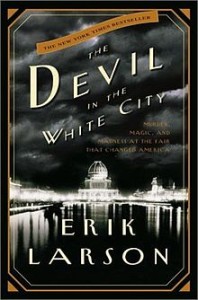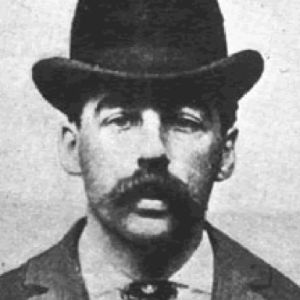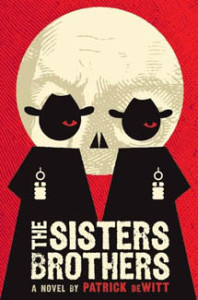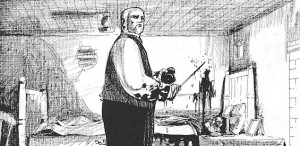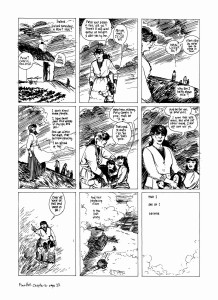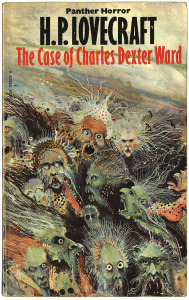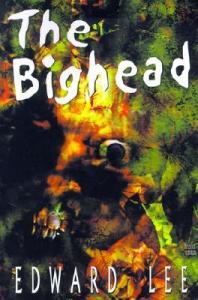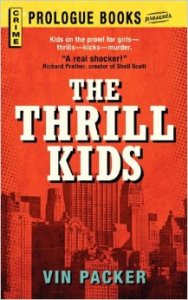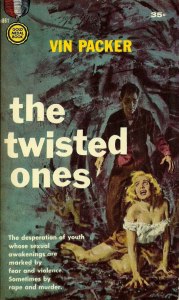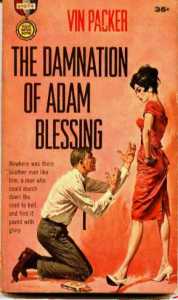
After falling in love with Lovecraft following my experience with The Case of Charles Dexter Ward, I picked up The Dreams in the Witch House for a refreshing visit into the more fantastical side of the horror master’s oeuvre, along with S.T. Joshi’s invaluable notes accompanying each text.
As Joshi reminds in his introduction, Lovecraft has both been criticized and (as usual for him) remained grossly critical of his own work in writing “There are my ‘Poe’ pieces & my ‘Dunsany’ pieces—but alas—where are any Lovecraft pieces?” The Dreams in the Witch-House collection mostly focuses on the latter style of the author’s works. This Penguin collection—one of three companion pieces by Penguin Classics including The Things at the Doorstep and The Call of the Cthulu—focuses on the more fantastical “Dream-Cycle” of the author’s work that exemplifies the strong influence of Lord Dunsany upon his artistic prowess as expressed by the author himself.
Nonetheless, Lovecraft’s writing remains as inimitable and impressive as ever—arguably the finest horror author to grace English literature with a command of language unparalleled in the genre. Moreover, Lovecraft often demonstrates in these pieces, more so than in his more celebrated works, the unbelievable level of creativity and invention made possible through a combination of his own distinct mythos and his precocious absorption of literature across the genres. Lastly, as found through the best of all his horror tales, Lovecraft imbues an unprecedented control of tone and language to make palpable a feeling of dread and verisimilitude that turn all his best pieces into unbelievably transportive pieces of literature.
“POLARIS”
A short, poetic tale that many have critics have noted as being a large autobiographical piece for Lovecraft as an allegory of his experiences during WW1. Specifically, the fact that Lovecraft was sidelined from major combat (as with the protagonist in the fictional realm of Lamar), due to his own personal neuroses. Despite not having read Dunsany until a bit later, the piece rings with numerous echoes of the Dunsany aesthetic (along with Poe, who influenced both authors) that contributed to his later attitudes expressed above.
The short tale is also notable for being the first to mention Lovecraft’s Pnakotic manuscripts. Additionally, the prose itself imbues a beautiful dream-like and poetic quality (having been based on an actual dream—like many of his stories) that offers a quick, interesting gateway to the aesthetic of the “Dream Cycle” collection.
The Doom That Came To Sarnath
As Joshi notes in his footnotes, “one of the earliest tales written under the influence of Lord Dunsany, whom HPL had seen lecture in Boston in October”. Like “Polaris”, the tale exhibits a more poetic and fantastical version of Lovecraft’s imagination that also mixes aspects of horror. The city of Ib and the stone idol of their god are the central tenets of this similarly short tale that should be more noteworthy for its ability to convey mood, atmosphere, and Dunsanian fantasy that offers an short, enjoyable read filtered with hints to the power of Lovecraft’s writing in the Dream Cycles to come within the collection.
The Terrible Old Man
Most interesting for standing as one of the few Lovecraft tales to include an element of crime as the catalyst for the horror, the tale concerns the horrific consequences upon three young men determined to rob the eponymous old man of the title for his reported wealth. Interestingly, as Joshi notes “The three thieves…represent the three major non-Anglo-Saxon ethnic groups in Rhode Island”. Furthermore, the story stands as the first introduction to Lovecraft’s mythical town of Kingsport (a fictional stand-in for Marblehead, Massachusetts). Again, one of the shorter of Lovecraft tales that offers a very cursory glance into the fantastical side of Lovecraft’s imagination to provocative results.
The Tree
Perhaps most interesting for fans of Machen’s masterpiece “The Great God Pan”, “The Tree” is a short Lovecraft tale set in Ancient Greece concerning the fate of two famous sculptors—Kalos and Musides—and the eponymous tree of the title. Set upon a mountain in Greece and perhaps influenced by the Machen tale mentioned above, another very short fantasy tale by the author that is also notable for its Grecian setting which had long fascinated Lovecraft since early childhood.
The Cats of Ulthar
A humorous, memorable, and truly weird fantasy tale from the master concerning the formation of a law forbidding the killing of cats within the fantastical city of Ulthar. As an enormous (and famously well-known) cat lover himself, the short tale serves as one of his most well-known and acclaimed in the style of Dunsany (specifically, with echoes of Dunsany’s The Idles Days of Yarn). Moreover, it’s certainly one of the most accessible of Lovecraft’s fantasy tales for early initiates.
From Beyond
Easily one of the weakest tales in the collection, the short story concerns an unnamed narrator’s account of his experiences with scientist Crawford Tillinghast, who has invented a machine capable of stimulating the pineal gland to allow experience into alternate planes of reality. Though Lovecraft’s command of mood remains as powerful as ever, and what ultimately keeps the reader from putting the book down, the overall point and conclusion of the story remains muddled and indecisive of what it ultimately hopes to express. Somewhat reminiscent of “Beyond the Wall of Sleep” or “Hypnos” though both tales are far, far superior.
The Nameless City
Another tale inspired by a dream from the author, “The Nameless City” remains one the best in the collection, an underrated story in its own right, and a fascinating precursor to the type of narrative to used to more profound effect in “At the Mountains of Madness” and “The Shadow Out of Time”. The nameless city of the title refers to an abandoned setting somewhere in the Arabian Peninsula, and Lovecraft peppers in an array of foreboding architectural details that will delight readers familiar with “Mountains of Madness”. Specifically, the fact that the very low-ceilings dominate the interior of the abandoned edifices and the use of bas-reliefs/hieroglyphs found in subterranean passages that offer a detailed history of the beings of this supposedly vacant, nameless city. These beings are revealed to be a monstrous reptile race described as something of a mix between a lizard, crocodile, and seal. Furthermore, the feeling of dread that the author subtly weaves and escalates until the final few pages imbues that same sense of gripping terror and wonder to be found in those other, more famous of his stories mentioned above. “The Nameless City” also contains the first mention of Lovecraft’s mad Arab Abdul Alhazred, who would later be mentioned in nearly every story of his pertaining to the Cthulu Mythos.
The Moon-Bog
As Joshi notes, easily one of the most conventional of his supernatural tales. The brief story was written for a group of amateur writers all contributing a St. Patrick’s Day themed story. The tale concerns the fate of the narrator’s friend who returns to Ireland to reclaim his estate within a fictional Irish town that borders a dreaded bog from which the locals have warned of superstitious doom. The final passage contains some eldritch imagery worth seeking out from what is otherwise a forgettable entry.
The Other Gods
With connections both to “The Cats of Ulthar” and to much greater extent in “The Dream-Quest of Unknown Kadath”, “The Other Gods” serves as another Dunsanian fantasy that concerns the fate of two travelers intending to scale the mountain of the gods to glimpse their faces. A fantastic meld of the best of Lovecraft’s fantasy, Dunsanian hubris, and hints of greater cosmic horror—“The Other Gods” stands as perhaps the best Lovecraft fantasy outside “Dream-Quest” and “The Stranger High House…”. A short but evocating tale that hints at the cosmic power and horror that would be revealed in greater detail within “The Dream-Quest of Unknown Kadath”.
Hypnos
A compelling, though ultimately lesser, version of a character venturing into the land of dreams to horrific results. The narrator meets a companion (who Joshi notes bears in his description a striking resemblance to Lovecraft’s literary idol Edgar Allan Poe) that joins the narrator in exploring realms only accessible through deep sleep. Though his companion takes drugs that compel his adventures further, the narrator refuses—going so far as to attempt to stop sleeping as to abate the nightmares brought forth from their travels. “Hypnos” occupies a similar narrative (though to better results) as “From Beyond” and (to lesser success) as “Beyond the Wall of Sleep”, and the final line is thought-provoking when rereading the narrative.
The Lurking Fear
Following in the thematic footsteps of horror through a degenerative family hereditary line found also in “Facts Concerning the Late Arthur Jermyn…”, “The Rats in the Walls”, and “Shadow over Innsmouth”, this underrated short story concerns a narrator fascinated with the local terror of the landscape known as Tempest Mountain wherein the abandoned Martense Mansion resides. Divided into four progressively dread-filled chapters, Lovecraft imbues this smaller-scale horror story with an escalating sense of terror and concludes in a horrific (though somewhat predictable) climax with powerful and vivid imagery concerning the grotesque fate that befell the Martense Family. A story that serves as a nice break from the numerous fantasy stories that populate the collection.
The Unnamable
A very, very brief piece that serves more as a treatise (or defense) of supernatural horror in literature. More or less a dialogue between two characters debating the merits of horror literature than one that weaves an actual narrative, though the loving prose Lovecraft imbues upon local New England topography and atmosphere within the cemetery of the setting is perhaps worth seeking out for some. More interestingly, “The Unnamable” contains the first appearance of the famous Randolph Carter character whose later adventures populate this collection.
The Shunned House
Lovecraft’s version of the classic haunted house tale based on an actual home that enraptured his imagination. Unlike most versions of the haunted house story, Lovecraft spends an impressive and well-deserved time establishing the history of the home, the strange fate that awaited its tenants, then finally allows for the protagonists to begin their nightly vigil awaiting for whatever supernatural horrors that may occur. The slow-build up, mounting dread, and sense of incredible atmospheric details all contribute to a feeling of incredible suspense and horror that is only marred by a not as adequate conclusion. Without spoiling it, it’s perhaps the only Lovecraft story I can recall that ends on an undeniably triumphant note with the hero definitively besting the supernatural horror (and in very bizarre fashion). Not that that can’t be an effective ending in its own right, but there’s a weird feeling of false emotion in the last paragraph that feels very out of place for the author. Still, the plotting and incredible verisimilitude that color the majority of the tale are too impressive to be ignored.
The Horror at Red Hook
Though it is perhaps most infamously remembered (and rightly so) for its abhorrent racism, and though it is certainly one of his least acclaimed by critics, “The Horror at Red Hook” is actually one of the author’s most interesting works due to its strictly urban setting compared to the author’s usual penchant for the pastoral realms of Providence or fantasy realm of dreams. While the potential for this urban horror is terribly wasted by Lovecraft’s blatant racism in using foreigners as the vehicle for the supernatural to unfold, it remains an intriguing and thought-provoking blend of crime and horror. Moreover, the conclusion of Dr. Malone’s investigation and the ultimate reveal of the horror at Red Hook stands as one of Lovecraft’s most creative passages in the author’s cannon. With echoes of my favorite Clark Ashton Smith story “The City of the Singing Flame”, Lovecraft describes the detective’s stumbling into a nightmarish world filled with a surfeit of distinctive and horrific creatures responsible for the ongoing crimes in Red Hook. Certainly not the author’s best tale, and again, the blatant xenophobia destroys the power of the premise, but for the sheer command of creativity, imagination, and unique mix of genre revealed in that passage described above—“The Horror at Red Hook” is very much recommended.
In the Vault
The most conventional and forgettable tale in the collection, maybe in Lovecraft’s career. The story concerns an undertaker trapped within a vault whose only escape is a high window, which he intends to reach by piling the nearby coffins into a ladder. Despite being rejected by Weird Tales for fear of its supposedly “extreme gruesomeness” not passing the Indiana censorship board, the tale is anything but. Lovecraft’s always impressive ability to imbue dread and atmosphere is present but used to hardly any memorable effect.
The Strange High House in the Mist
A short, beautiful, Dunsanian fantasy written with gorgeous prose and descriptions of the Lovecraft’s fictional coast city of Kingsport. Like most of his short fantasies, plot and character take a backseat in favor of creative and weird imagery that demand the reader to absorb both the awe of the land and those horrors awaiting those who demand more from the gods.
The Dream-Quest of Unknown Kadath
The undeniable masterpiece of the book, one of the best of Lovecraft’s career, and one of the best pieces of pure fantasy ever published. Unpublished in his own lifetime (and as per usual described by Lovecraft himself in saying: “it isn’t much good”), the novella is a long, uninterrupted journey by the recurring character of Randolph Carter seeking the sunset city of his dreams. Carter resolves to literally seek out the gods responsible in hopes of finally finding the sunset city and ventures into realms both horrific and grand.
Lovecraft populates the yarn with an unbelievable number of creative machinations: from ghouls, to night-gaunts, to zoogs, to the depths of cold wastes, to the hidden face of the Moon, to the high hall pantheons of the gods, to the abyss of chaos. Each distinct and fantastic setting is poetically described with a sense of majesty and awe that serves as the best evidence possible for Lovecraft’s inimitable and uncompromised imagination. Each episode and fantastic character encountered by Carter could fill a novel of its own right, and Lovecraft peppers in such a plethora of beautifully creative arrangements that the prose can be overwhelming (in the best way to possible) due to the sheer intensity of its scope and ambitions.
The culmination of Carter’s adventures find the character confronting the ultimate horror and beauty of Lovecraft’s obsessions in a breathtaking finale that sends Carter (and the reader) reeling through voids of time and space in powerful, profound moment that ranks amongst one of the most breathtaking sequences in Lovecraft’s career. While the word fantasy often automatically conjures up the usual suspects of Tolkien, Martin, Dunsany (whose influence is clear throughout the piece), and as much as I adore all their separate works, as well, Lovecraft uses the genre in a very distinct way to conjure up realms with an awe-inspiring sense of scope toward the larger cosmos that truly is without parallel.
The Silver Key
Following Carter’s adventures back home from Kadath, “The Silver Key” finds Randolph once again in a state of ennui and wanting more out of life. The short tale is less of a narrative and more of a story in disguise of a treatise—in a style that somewhat calls to mind “The Unnamable” from earlier in the collection. “The Silvery Key” is most interesting as a guide into Lovecraft’s opinions on a variety of topics: as a criticism of religion, to even harsher criticism of bohemian lifestyle of any sort, to man’s place in the universe—that last view expressed as one of his most major points of interests throughout his career.
Through the Gates of the Silver Key
A sequel of sorts to “The Silver Key” and the next entry into the continuing adventures of Randolph Carter. Co-written with E. Price Hoffman (though the latter admits that only about fifty words of his original treatment remain after Lovecraft’s re-write), the story was spurned by Hoffman’s urging Lovecraft to follow on Carter’s whereabouts after his disappearance through the portal unlocked by the silver key. The narrative concerns four men meeting to divide the estate of Randolph Carter following his disappearance. One of these men is the mysterious looking Swami Chandraputra, who speaks with a strange voice and wears curious clothing to hide to appearance, and who promises to relate the final fate that befell Randolph Carter.
What follows is one of the most bizarre (not completely successful) but compelling narratives of Lovecraft’s career as Carter’s journey through portals of time, existence, and realms populated by weird creatures of both the Dunsany and Cthulu Mythos variety. Again, there are shades of more philosophical expounding than anything else—maintaining its status as literal and thematic sequel to “The Silver Key”—with Lovecraft pouring out even denser, though always evocative descriptions, of the vast gulfs of the cosmos, time, and man’s insignificant space occupied between them. The conclusion is obvious from miles away, with the text pointing this out in a tongue-and-cheek manner, but the story remains oddly compelling as a vehicle for Lovecraft to further distill those concepts of his obsession discuss above, and in even greater depth than to be found in “The Silver Key”.
The Dreams in the Witch House
As most critics have widely agreed that both “The Dreams in the Witch House” and “The Thing on the Doorstep” are of the two weakest Lovecraft stories, it is baffling as to why Penguin would title two of the three major collections after these lesser efforts. Even in Joshi’s introductory notes to the piece, he writes: “The tale suffers from plot holes and florid prose and cannot be ranked amongst his better later efforts”.
Nonetheless, the tale’s preceding reputation remains well-deserved. Though a more imaginative and better-realized effort than “From Beyond”, “The Dreams in the Witch House” is a muddled mess of ideas marred by repetitive writing and a confluence of weird elements that never find a suitable climax to merge toward a more powerful, singularly effective result. A witch, “The Black Man”/the devil, the human/rat hybrid of Brown Jenkins, a haunted house that serves as a portal to the type of cosmic horrors experienced by Carter, a visit with the Shoggoths from “Mountains”—all these elements are better fit for Lovecraft tale of their own design and story. While it is interesting to consider the fact that this tale—unlike most Lovecraft narratives where it is the suggestion of the horror that is most memorable—that the author chooses to go the opposite route and lay out in (somewhat) explicit detail the consequences of the horrors found in the Witch House. (I say somewhat as there are indescribable horror concepts of time and space.)
Moreover, Lovecraft is repetitive in a way not found in the horror master’s usual efforts. Gilman’s adventures beyond the realms of sleep, his encounter with Brown Jenkins, and the like…only begin to escalate in the final few pages, and the author’s trademark ability to imbue a sense of palpable dread is nearly absent from the entirety of piece. Suffice to say, there are memorable, creative concepts and images at play, though they are unfortunately wasted within this very lesser entry in the Lovecraft canon.
The Shadow Out of Time
The best story in the collection outside of “Dream-Quest”. Somewhat reminiscent of its siblings “At the Mountains of Madness” and “The Nameless City”, the story recounts two principal episodes of the protagonist’s adventure. The first concerns his mind being swapped by the “Great Race” of extraterrestrial beings of Yith. These early pages dealing with the mind swap are characteristic of Lovecraft’s other great work “The Case of Charles Dexter Ward”, though the author greatly expands upon ideas of cosmic scope as found within this narrative. The next section then details the protagonists “dreams” when inhabiting the city of Yith during the mind-swap. These sequences are further evidence of the unyielding and incomparable creative imaginings of Lovecraft’s mind, as the author describes in fantastic, specific details as to the sociological, historical, psychological, and physiological aspects that pertain to this extraordinary race, who have swapped minds with not only other human beings, but with entities from far reaches of the cosmos. With descriptions for the bygone city as beautifully crafted as Lovecraft’s gorgeous prose for his own town of Providence, the author details the topography and landscapes of the eldritch region to very captivating effect.
Still, these chapters are only set-up to the master class of tone and atmospheric dread evidenced in the last chapters of the novel. Following the discovery of relics that match those found within the protagonist’s dreams, the setting switches to the uncombed desert regions of Australia. Here, the protagonist stumbles upon the (ostensibly) deserted remains of an underground city as imaginative and horrifying as those cold, cryptic regions of Antarctica depicted in “At the Mountains of Madness”.
As with that entry, Lovecraft conjures a sense of atmosphere and inexorable dread toward the protagonist’s final confrontation with horrifying creatures thought long-dead into a climax that stands as one of the most powerful displays of craft as can be found in horror literature. Though the reveal in “Mountains” is perhaps still the best and most memorable conclusion for its vivid description of the Shoggoth entity, “Shadow” instead favors a more vague foreshadowing and hinting toward the true scope of the terrifying creature that remains undeniably effective as ever. One of best in Lovecraft’s bibliography and an excellent final entry into the “Witch House” collection.
